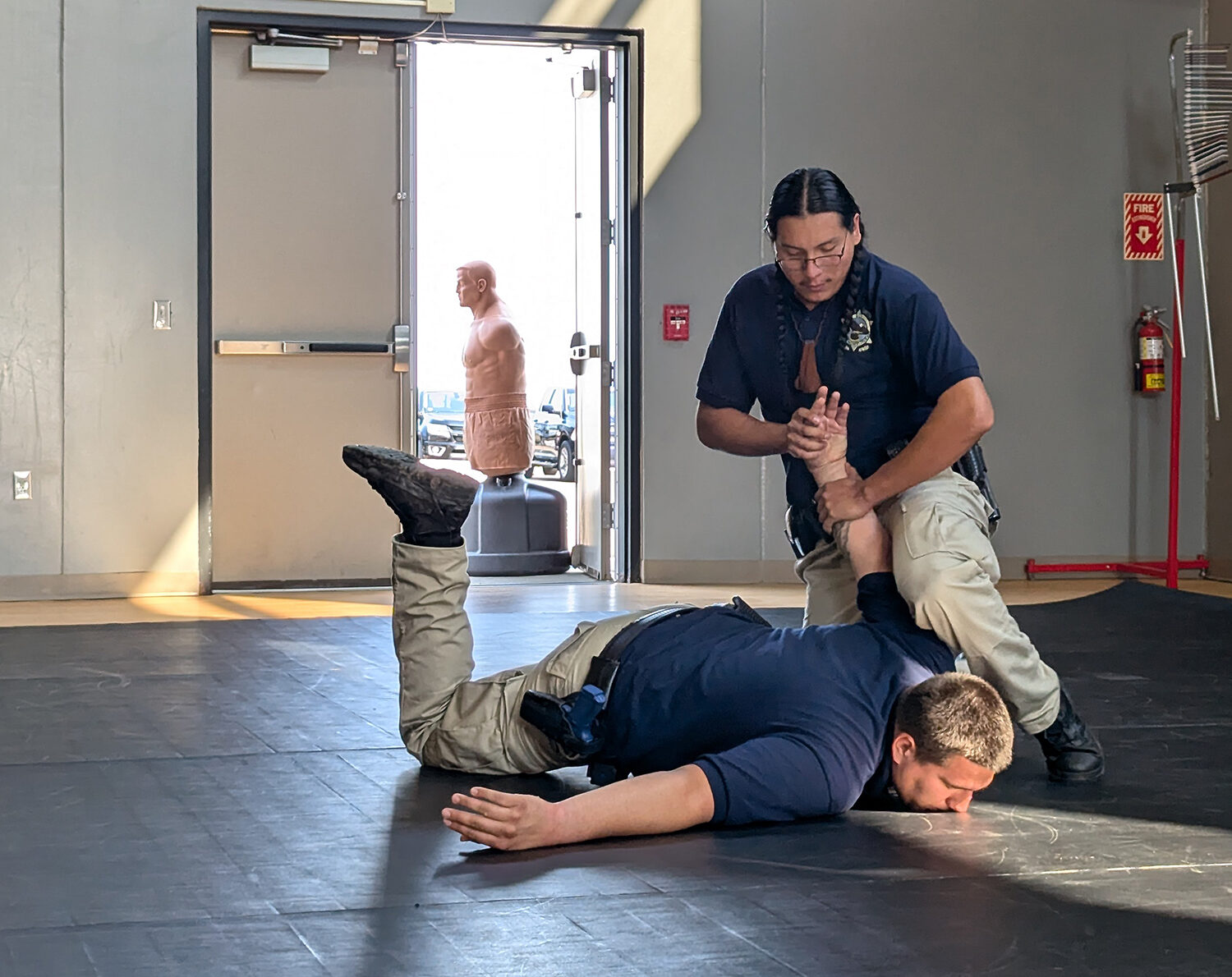
John Hult/South Dakota Searchlight
PIERRE — South Dakota Attorney General Marty Jackley hopes a new basic law enforcement training course that prioritizes tribal recruits will prove the state could host regional training for Native American officers from the Upper Midwest.
Jackley and U.S. Attorney Alison Ramsdell spoke Monday at the George S. Mickelson Law Enforcement Center in Pierre, in advance of a media tour of the facility and presentations on the ongoing course.
The state’s police academy has long been open to recruits from tribal law enforcement agencies. In practice, though, most attend the 13-week training through the Bureau of Indian Affairs (BIA) at a facility in Artesia, New Mexico.
After the basic course is complete, the tribal recruits will be offered an add-on course in tribal policing, which also typically takes place in Artesia and focuses on tribal policing. The BIA has offered its support to that portion of the training in South Dakota.
“The overall goal would be to not just have South Dakota tribal or South Dakota BIA officers here, but because we do such a good job, to expand it regionally,” Jackley said.
Born of controversy, history of recruitment trouble
Gov. Kristi Noem threw her support behind the idea of an additional basic law enforcement course that would prioritize tribal recruits this spring amid a flurry of controversy over statements she’d made on public safety on the state’s tribal lands.
Noem delivered a speech on border security during the winter legislative session that linked migration at the U.S.-Mexico border to cartel-related drug abuse and violence on reservations. Noem has claimed without evidence that some tribal leaders are “personally benefiting” from a cartel presence on the state’s reservations.

Tribes have pushed back on those claims. Leaders in all nine of South Dakota’s tribes have voted to ban her from their lands, citing the claims about cartels, as well as what they’ve described as disparaging comments Noem made about Native American children and parents.
Even so, tribal leaders have long decried a dearth of funding for public safety on reservations, which is a treaty obligation for the U.S. government.
The typical expectation that tribal recruits spend weeks away from their families in New Mexico has been a barrier to recruitment noted by tribal leaders, as well as Noem and members of South Dakota’s congressional delegation.
U.S. Sen. Mike Rounds, R-South Dakota, has called for the establishment of a Midwestern training center for the BIA, pointing to the state’s Mickelson Center as a prime partnership candidate for such an endeavor.
On Monday, Jackley praised Noem for throwing her support behind the current course, now in its sixth of 13 weeks.
“I had been asking for additional classes ever since I’ve been attorney general, and I want to give this governor credit,” Jackley said.
The new course is no different from any other basic law enforcement course offered in Pierre, aside from its goal of prioritizing the acceptance of tribal recruits.
U.S. attorney: consistent training, relationships aid prosecutions
The course, provided at no cost to local agencies, drew 11 tribal recruits from three tribes: the Sisseton-Wahpeton Oyate, the Oglala Sioux Tribe and Cheyenne River Sioux Tribe. Another 13 recruits joined them from agencies across the state to make a class of 24.

Ramsdell, whose office prosecutes all felony-level crimes that occur on reservations in South Dakota, also praised the decision to hold a tribal-priority training course. She said the basic training is valuable because it brings together officers from across the state to build the kinds of relationships necessary to work across jurisdictions.
There were more than 500 prosecutions led by Ramdell’s office last year, she said, with 220 originating in tribal areas. The office also prosecuted 140 people for drug trafficking.
“Our state really leads the nation on these stats,” Ramsdell said. “We’re often second or third after Arizona and Oklahoma in prosecuting violent crime in Indian Country.”
Ramsdell said she’d looked through the list of agencies represented by the recruits before coming to Pierre, and “over the last year and a half, we’ve worked with each one of them on really meaningful prosecutions.”
In a state as small as South Dakota, she said, cooperation and relationships are critical to public safety.
“I think it’s exemplary of the fact that everything we do starts locally, and without our local partners, we wouldn’t have the success we do at the U.S. Attorney’s Office,” she said.
That’s one of the reasons Jackley said he hopes to see the course pave a path for more tribal law enforcement training in the future.
A training ground near a recruit’s home allows them to get home to their families on weekends, ensures consistency for all officers working in South Dakota’s borders and builds connections between those officers.
“I think all those things make good sense as to why this should happen here,” Jackley said. “I think it’s why we have local officers teaching this class, why we have tribal officers and tribes willing to attend it, and why I think this is going to be a success.”
